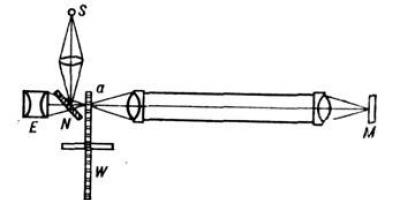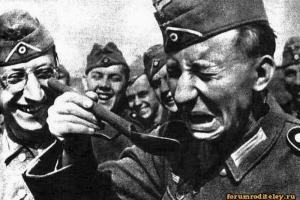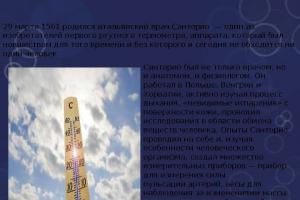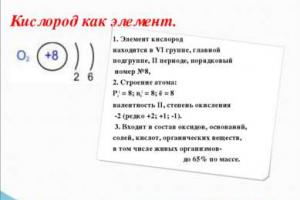There are various legends about the ingenuity of Russian soldiers. It manifested itself especially clearly during the harsh years of the Great Patriotic War.
"For fear"
During the retreat of the Soviet troops in 1941, one of the KV-1 tanks (Klim Voroshilov) stalled. The crew did not dare to abandon the car - they remained in place. Soon German tanks approached and began shooting at Voroshilov. They shot all the ammunition, but only scratched the armor. Then the Nazis, with the help of two T-IIIs, decided to tow the Soviet tank to their unit. Suddenly the KV-1 engine started up, and our tankers, without thinking twice, set off towards their own, dragging two enemy tanks in tow. The German tank crews managed to jump out, but both vehicles were successfully delivered to the front line. During the defense of Odessa, twenty tanks converted from ordinary tractors lined with armor were thrown against the Romanian units. The Romanians knew nothing about this and thought that these were some of the latest impenetrable tank models. As a result, panic began among the Romanian soldiers and they began to retreat. Subsequently, such “transformer” tractors were nicknamed “NI-1,” which meant “to be frightened.”
Bees against the Nazis
Non-standard moves often helped defeat the enemy. At the very beginning of the war, during the battles near Smolensk, one Soviet platoon found itself not far from a village where there were honey apiaries. A few hours later, German infantry entered the village. Since there were much more Germans than Red Army soldiers, they retreated towards the forest. There seemed to be no hope of escape. But then one of our soldiers came up with a brilliant idea: he began to turn over the hives with bees. The angry insects were forced to fly out and began to circle over the meadow. As soon as the Nazis approached, the swarm attacked them. From numerous bites, the Germans screamed and rolled on the ground, while the Soviet soldiers retreated to a safe place.
Heroes with an ax
There were amazing cases when one Soviet soldier managed to survive against an entire German unit. So, on July 13, 1941, private machine gun company Dmitry Ovcharenko was riding on a cart with ammunition. Suddenly he saw that a German detachment was moving straight towards him: fifty machine gunners, two officers and a truck with a motorcycle. The Soviet soldier was ordered to surrender and taken to one of the officers for questioning. But Ovcharenko suddenly grabbed an ax lying nearby and cut off the fascist’s head. While the Germans were recovering from the shock, Dmitry grabbed grenades that belonged to the killed German and began throwing them into the truck. After that, instead of running, he took advantage of the confusion and began swinging his ax right and left. Those around him fled in horror. And Ovcharenko also set off after the second officer and also managed to cut off his head. Left alone on the “battlefield,” he collected all the weapons and papers available there, did not forget to grab the officer’s tablets with secret documents and maps of the area, and delivered it all to headquarters. The command believed his amazing story only after seeing the scene of the incident with their own eyes. For his feat, Dmitry Ovcharenko was nominated for the title of Hero of the Soviet Union. There was another interesting episode. In August 1941, the unit where Red Army soldier Ivan Sereda served was stationed near Daugavpils. Somehow Sereda remained on duty in the field kitchen. Suddenly he heard characteristic sounds and saw an approaching German tank. The soldier had only an unloaded rifle and an ax with him. We could only rely on our own ingenuity and luck. The Red Army soldier hid behind a tree and began to watch the tank. Of course, the Germans soon noticed a field kitchen deployed in the clearing and stopped the tank. As soon as they got out of the car, the cook jumped out from behind a tree and rushed towards the Nazis, waving weapons - a rifle and an ax - with a menacing look. This attack scared the Nazis so much that they immediately jumped back. Apparently, they decided that there was another whole company of Soviet soldiers nearby. Meanwhile, Ivan climbed onto the enemy tank and began hitting the roof with an ax. The Germans tried to fire back with a machine gun, but Sereda simply hit the muzzle of the machine gun with the same ax, and it bent. In addition, he began shouting loudly, allegedly calling for reinforcements. This led to the enemies surrendering, getting out of the tank and, at rifle point, obediently heading towards the direction where Sereda’s comrades were at that time. So the Nazis were captured.
The topics of the history of the Great Patriotic War are multifaceted. For many years, the war was described from the point of view of political leadership, the state of the fronts in relation to “manpower” and equipment. The role of an individual in war was illuminated as part of a gigantic mechanism. Particular attention was paid to the ability of the Soviet soldier to carry out the order of the commander at any cost, and the readiness to die for the Motherland. The established image of war was questioned during the Khrushchev “thaw”. It was then that the memoirs of war participants, notes of war correspondents, front-line letters, diaries began to be published - sources that are least susceptible to influence. They raised “difficult topics” and revealed “blank spots”. The theme of man in war came to the fore. Since this topic is vast and diverse, it is not possible to cover it in one article.
Based on front-line letters, memoirs, diary entries, as well as unpublished sources, the authors will still try to highlight some of the problems of front-line life during the Patriotic War of 1941-1945. How the soldier lived at the front, in what conditions he fought, how he was dressed, what he ate, what he did during short breaks between battles - all these questions are important, and it was the solution of these everyday problems that largely ensured victory over the enemy. At the initial stage of the war, soldiers wore a tunic with a fold-down collar, with special pads at the elbows. Usually these covers were made of tarpaulin. The gymnast was worn with pants that had the same canvas linings around the knees. On the feet there are boots and windings. It was they who were the main grief of the soldiers, especially the infantry, since it was this branch of the army that served in them. They were uncomfortable, flimsy and heavy. This type of shoe was driven by cost savings. After the publication of the Molotov-Ribbentrop Pact in 1939, the USSR army increased to 5.5 million people in two years. It was impossible to put boots on everyone.
They saved on leather, boots were made from the same tarpaulin 2. Until 1943, an indispensable attribute of an infantryman was a roll over the left shoulder. This is an overcoat that was rolled up for mobility and put on so that the soldier did not experience any discomfort when shooting. In other cases, the roll-up caused a lot of trouble. If in the summer, during the transition, the infantry was attacked by German aircraft, then because of the slope, the soldiers were visible on the ground. Because of it, it was impossible to quickly escape to a field or shelter. And in the trench they simply threw it under their feet - it would have been impossible to turn around with it. The soldiers of the Red Army had three types of uniforms: everyday, guard and weekend, each of which had two options - summer and winter. Between 1935 and 1941, numerous minor changes were made to the clothing of the Red Army soldiers.
The field uniform of the 1935 model was made from fabric of various shades of khaki color. The main distinguishing element was the tunic, which in its cut, the same for soldiers and soldiers, resembled a Russian peasant shirt. There were also summer and winter gymnasts. The summer uniform was made from cotton fabric of a lighter color, and the winter uniform was made from woolen fabric, which had a richer, darker color. The officers wore a wide leather belt with a brass buckle decorated with a five-pointed star. The soldiers wore a simpler belt with an open buckle. In field conditions, soldiers and officers could wear two types of gymnasts: everyday and weekend. The weekend tunic was often called a French jacket. The second main element of the uniform was trousers, also called breeches. Soldiers' trousers had diamond-shaped reinforcing stripes on the knees. For footwear, officers wore high leather boots, and soldiers wore boots with windings or tarpaulin boots. In winter, military personnel wore an overcoat made of brownish-gray cloth. Soldiers' and officers' overcoats, identical in cut, nevertheless differed in quality. The Red Army used several types of hats. Most units wore budenovki, which had a winter and summer version. However, at the end of the 30s, summer Budenovka
was everywhere replaced by the cap. Officers wore caps in the summer. In units stationed in Central Asia and the Far East, wide-brimmed Panama hats were worn instead of caps. In 1936, a new type of helmet began to be supplied to the Red Army. In 1940, noticeable changes were made to the design of the helmet. Officers everywhere wore caps; the cap was an attribute of officer power. Tankers wore a special helmet made of leather or canvas. In summer they used a lighter version of the helmet, and in winter they wore a helmet with a fur lining. The equipment of Soviet soldiers was strict and simple. The 1938 model canvas duffel bag was common. However, not everyone had real duffel bags, so after the war began, many soldiers threw away gas masks and used gas mask bags as duffel bags. According to the regulations, every soldier armed with a rifle was required to have two leather cartridge bags. The bag could store four clips for a Mosin rifle - 20 rounds. Cartridge bags were worn on the waist belt, one on each side.
The officers used a small bag, which was made of either leather or canvas. There were several types of these bags, some of them were worn over the shoulder, some were hung from the waist belt. On top of the bag was a small tablet. Some officers carried large leather tablets that were hung from the waist belt under their left arm. In 1943, the Red Army adopted a new uniform, radically different from that used until then. The system of insignia has also changed. The new tunic was very similar to the one used in the tsarist army and had a stand-up collar fastened with two buttons. The main distinguishing feature of the new uniform was the shoulder straps. There were two types of shoulder straps: field and everyday. Field shoulder straps were made of khaki-colored fabric. On the shoulder straps near the button they wore a small gold or silver badge indicating the branch of the military. Officers wore a cap with a black leather chinstrap. The color of the band on the cap depended on the type of troops. In winter, generals and colonels of the Red Army had to wear hats, and the rest of the officers received ordinary earflaps. The rank of sergeants and foremen was determined by the number and width of the stripes on their shoulder straps.
The edging of the shoulder straps had the colors of the branch of the military. Among the small arms in the first years of the war, the legendary “three-line rifle”, the three-line Mosin rifle of the 1891 model, enjoyed great respect and love among the soldiers. Many soldiers gave them names and considered the rifle a real comrade in arms that never failed in difficult battle conditions. But, for example, the SVT-40 rifle was not liked because of its capriciousness and strong recoil. Interesting information about the life and everyday life of soldiers is contained in such sources of information as memoirs, front-line diaries and letters, which are least susceptible to ideological influence. For example, it was traditionally believed that soldiers lived in dugouts and pillboxes. This is not entirely true, most of the soldiers were located in trenches, trenches or simply in the nearest forest without regretting it at all. It was always very cold in the pillboxes; at that time, there were no autonomous heating systems or autonomous gas supply, which we now use, for example, to heat a summer house, and therefore the soldiers preferred to spend the night in the trenches, throwing branches at the bottom and stretching a raincoat on top.
The soldiers’ diet was simple: “Shchi and porridge are our food” - this proverb accurately characterizes the rations of soldiers’ kettles in the first months of the war and, of course, a soldier’s best friend is crackers, a favorite delicacy especially in field conditions, for example on a battle march. It is also impossible to imagine a soldier’s life during short periods of rest without the music of songs and books, which gave rise to a good mood and raised spirits. But still, the most important role in the victory over fascism was played by the psychology of the Russian soldier, who was able to cope with any everyday difficulties, overcome fear, survive and win. During the war, the treatment of patients consisted of the use of various ointments; the Demyanovich method was also widespread, according to which naked patients rubbed a hyposulfite solution and then hydrochloric acid into the body - from top to bottom.
In this case, pressure is felt on the skin, similar to rubbing with wet sand. After treatment, the patient may feel itching for another 3-5 days, as a reaction to killed mites. At the same time, many war fighters managed to get sick from these diseases dozens of times. In general, washing in the bathhouse and undergoing sanitary treatment, both the “old men” and the reinforcements arriving at the unit, took place mainly while in the second echelon, that is, without directly participating in the battles. Moreover, washing in the bathhouse was most often timed to coincide with spring and autumn. In the summer, soldiers had the opportunity to swim in rivers, streams, and collect rainwater. In winter, it was not always possible not only to find a ready-made bathhouse built by the local population, but also to build a temporary one ourselves. When one of the Smershev heroes in Bogomolov’s famous novel “The Moment of Truth (In August 1944)” pours out the freshly prepared stew before unexpectedly moving to another place, this is a typical case of front-line life. Redeployments of units were sometimes so frequent that not only military fortifications, but also domestic premises were often abandoned soon after their construction. The Germans washed in the bathhouse in the morning, the Magyars in the afternoon, and ours in the evening. The life of a soldier can be divided into several categories related to where this or that unit was located. The greatest hardships befell the people on the front line; there was no usual washing, shaving, breakfast, lunch or dinner.
There is a common cliche: they say, war is war, and lunch is on schedule. In fact, there was no such routine, much less any menu. It must be said that then a decision was made to prevent the enemy from seizing the collective farm livestock. They tried to get him out, and where possible, they handed him over to military units. The situation near Moscow in the winter of 1941-1942 was completely different, when there were forty-degree frosts. There was no talk of any dinner then. The soldiers either advanced or retreated, regrouped their forces, and there was no positional warfare as such, which means it was impossible to even somehow organize life. Usually once a day the foreman brought a thermos with gruel, which was simply called “food.” If this happened in the evening, then there was dinner, and in the afternoon, which happened extremely rarely, lunch. They cooked what they had enough food for, somewhere nearby, so that the enemy could not see the kitchen smoke. And they measured each soldier a ladle into a pot. A loaf of bread was cut with a two-handed saw, because in the cold it turned into ice. The soldiers hid their “rations” under their overcoats to keep them warm at least a little. Each soldier at that time had a spoon behind the top of his boot, as we called it, an “entrenching tool,” an aluminum stamping.
It served not only as a cutlery, but also as a kind of “calling card.” The explanation for this is this: there was a belief that if you carry a soldier’s medallion in your trouser pocket-piston: a small black plastic pencil case, which should contain a note with data (last name, first name, patronymic, year of birth, where you were called up from), then you will definitely be killed. Therefore, most fighters simply did not fill out this sheet, and some even threw away the medallion itself. But they scratched out all their data on a spoon. And therefore, even now, when search engines find the remains of soldiers who died during the Great Patriotic War, their names are determined precisely from the spoons. During the offensive, dry rations of crackers or biscuits and canned food were given out, but they really appeared in the diet when the Americans announced their entry into the war and began to provide assistance to the Soviet Union.
The dream of any soldier, by the way, was fragrant overseas sausages in jars. Alcohol was only available at the front line. How did this happen? The foreman arrived with a can, and in it was some kind of cloudy liquid of a light coffee color. A pot was poured onto the compartment, and then each was measured with the cap of a 76-mm projectile: it was unscrewed before firing, releasing the fuse. Whether it was 100 or 50 grams and what strength, no one knew. He drank, “bit” his sleeve, that’s all the “drunkenness.” In addition, from the rear of the front, this alcohol-containing liquid reached the front line through many, as they now say, intermediaries, so both its volume and “degrees” decreased. Films often show that a military unit is located in a village where living conditions are more or less human: you can wash yourself, even go to the bathhouse, sleep on a bed... But this could only be the case for headquarters located at some distance from the front line.
But at the very front, the conditions were completely different and extremely harsh. The Soviet brigades formed in Siberia had good equipment: felt boots, regular and flannel foot wraps, thin and warm underwear, cotton trousers, as well as cotton pants, a tunic, a quilted padded jacket, an overcoat, a balaclava, a winter hat and mittens made of dog fur. A person can endure even the most extreme conditions. Soldiers slept, most often, in the forest: you cut spruce branches, make a bed out of them, cover yourself with these paws on top, and lie down for the night. Of course, frostbite also occurred. In our army, they were taken to the rear only when there was almost nothing left of the unit except its number, banner and a handful of fighters. Then the formations and units were sent for reorganization. And the Germans, Americans and British used the principle of rotation: units and subunits were not always on the front line, they were replaced by fresh troops. Moreover, soldiers were given leave to travel home.
In the Red Army, out of the entire 5 million-strong army, only a few received leave for special merits. There was a problem of lice, especially in the warm season. But the sanitary services in the troops worked quite effectively. There were special “vosheka” cars with closed van bodies. Uniforms were loaded there and treated with hot air. But this was done in the rear. And on the front line, the soldiers lit a fire so as not to violate the rules of camouflage, took off their underwear and brought it closer to the fire. The lice just crackled and burned! I would like to note that even in such harsh conditions of unsettled life in the troops there was no typhus, which is usually carried by lice. Interesting facts: 1) A special place was occupied by the consumption of alcohol by personnel. Almost immediately after the start of the war, alcohol was officially legalized at the highest state level and included in the daily supply of personnel.
Soldiers considered vodka not only as a means of psychological relief, but also as an indispensable medicine in the Russian frosts. It was impossible without her, especially in winter; bombings, artillery shelling, tank attacks had such an effect on the psyche that only vodka was the only way to escape. 2) Letters from home meant a lot to the soldiers at the front. Not all soldiers received them, and then, listening to the reading of letters sent to their comrades, everyone felt it as their own. In response, they wrote mainly about the conditions of front-line life, leisure, simple soldier entertainment, friends and commanders. 3) There were moments of rest at the front. A guitar or accordion sounded. But the real holiday was the arrival of amateur artists. And there was no more grateful spectator than the soldier, who, perhaps in a few hours, was about to go to his death. It was difficult for a person in war, it was difficult to watch a dead comrade fall nearby, it was difficult to dig graves in hundreds. But our people lived and survived in this war. The unpretentiousness of the Soviet soldier and his heroism made victory closer every day.
Literature.
1. Abdulin M.G. 160 pages from a soldier's diary. – M.: Young Guard, 1985.
2. The Great Patriotic War 1941-1945: encyclopedia. – M.: Soviet Encyclopedia, 1985.
3. Gribachev N.M. When you become a soldier... / N.M. Gribachev. – M.: DOSAAF USSR, 1967.
4. Lebedintsev A.Z., Mukhin Yu.I. Fathers-commanders. – M.: Yauza, EKSMO, 2004. – 225 p.
5. Lipatov P. Uniforms of the Red Army and the Wehrmacht. – M.: Publishing House “Technology for Youth”, 1995.
6. Sinitsyn A.M. Nationwide assistance to the front / A.M. Sinitsyn. – M.: Voenizdat, 1985. – 319 p.
7. Khrenov M.M., Konovalov I.F., Dementyuk N.V., Terovkin M.A. Military clothing of the Armed Forces of the USSR and Russia (1917-1990s). – M.: Voenizdat, 1999.
By its nature, the German nation is very different from all others. They consider themselves highly educated people for whom order and system are above all else. As for the German fascists led by Fuhrer Hitler, who wanted to take over the whole world, including the Soviet Union, it is worth saying that they revered only their nation and considered it the best of all others. During the Great Patriotic War, the Nazis, in addition to burning cities and exterminating Soviet soldiers, found time to entertain themselves, but not always in humane ways.
The Great Patriotic War suffered many events that left their indelible mark on the history of mankind. Active hostilities took place constantly, only the locations and military personnel changed. In addition to the defeats, bombings and battles of the Red Army soldiers and the fascist invaders, at the moments when the explosions subsided, the soldiers had the opportunity to rest, replenish their strength, eat and have fun. And in such a difficult time for everyone, the soldiers, who constantly walked close to death, saw how their colleagues and just friends were killed before their eyes, knew how to rest, abstract themselves, sing war songs, write poems about war, and just laugh at interesting stories.
But not all entertainment was harmless, because everyone has a different understanding of fun. For example, Germans throughout the Second World War they showed themselves to be brutal killers, sparing no one on their way. According to many historical facts and testimonies of older people who themselves witnessed that terrible period of time, it can be stated that all the actions of the Nazis were not so forced; many actions were carried out on their personal initiative. Killing and torturing many people became a kind of fun and games. The fascists felt their power over other people, and to assert themselves they committed all the most brutal crimes that were not punished in any way.
It is known that in occupied territories, enemy troops took civilians hostage and covered them with their bodies, and then executed them. People were killed in gas chambers and burned in crematoria, which at that time worked without interruption. The punishers spared no one. The executioners shot, hanged and burned alive small children, women, and old people and took pleasure in it. How this is possible is inexplicable to this day and it is unknown whether all these brutal historical mysteries will ever be solved. One of the ways of entertainment of the German fascists was the rape of women and little girls. Moreover, this was often done collectively and very cruelly.
Photographs from the Great Patriotic War show that the Germans were engaged in hunting, and were very proud of their trophies. Probably, hunting and fishing were just entertainment for the Nazis, since they were fed much better than Soviet soldiers. The Nazis especially loved to hunt large animals, wild boars, bears and deer. Germans They also loved to have a good drink, dance and sing. Since they are an extraordinary people, they came up with appropriate activities, which is clearly shown in many photographs. The German fascists undressed and took away cars and strollers from civilians and posed with them. Also Nazis they loved to pose with the ammunition that was used to destroy the glorious Soviet people.
However, in addition to all the worst things, there is an opinion that not all German invaders were cruel and merciless. There are many documented testimonies that state that the Germans even helped some families and elderly people with whom they lived during the occupation of Soviet territories.
Be that as it may, there will never be a good attitude towards the fascists. There is no forgiveness for such bloody actions.
) and I’m posting interesting photos for you from 1941-45
Today I found a disk with photos from satellite fishing. I saw this folder about how the Germans had fun during the war, after the battles. The funny shots will surprise you, I think. Of course, there are photographs that many will think: well, he showed this here on the forum... But I think history is not a shame or falsehood, history should be impartial, the same as captured by the photographer of that time!
By the way, what is satellite fishing? It's free to rob from a satellite. I did this for a while, I got carried away. Someone is downloading this via satellite Internet, and I wedge myself into the stream and download it for myself too! I set catch jepeg, avi, dvd from zero to infinity (file size catch). It was great, but tiring... During the night I “stole” 15-20 gigs in total. It took an hour and a half to sort and look. You quickly get fed up with pleasure... Someday I will tell you here what satellite fishing is and what you need to do at home in order to download for free from any satellites.
I reduced the photos for you and posted them here in this thread. Photos of fascists having fun after battles, laughing, making fun of their friends - it’s so interesting to see all this 60 years later! Of course, Germans are people too, and all people tend to joke and have fun in their free moments from fighting. After all, to survive and enjoy every day when you are alive is immeasurable happiness...
Take me for a ride, buddy! A fascist sits on a baby stroller, barely able to fit his seat

The German is trying something, apparently the cook. And his friends grin when they see his sour expression

Interesting photo shoot of naked Wehrmacht soldiers! Helmets, machine guns in hand and grins, like we can’t do that yet...

Like a Hercules with a cigarette in his mouth at war!

Apollo, your mother, covered the most secret things with a “fig leaf” (burdock). A knife-bayonet on the side, always ready for battle...

The hunt was a success... Apparently, north. Perhaps where is Murmansk or where is the Kola Peninsula.

And we don’t care about military service! Long and short. The photographer clearly makes it known that it is an honor to serve in the German army. And after more than 60 years, this is funny to us. Imagine for a moment, the trench dug by the tall soldier on the right is too big for the short one? How to get out of it in battle and run into the attack with everyone???? Imagine for a moment his attempts to get out of a deep hole?

And now it’s the other way around! Fat and skinny! At first I thought that Hitler was standing on the right as a child) But I saw the insignia, this is clearly a soldier wearing a mustache ala Fuhrer Hitler! Imitates, so to speak. A covert parody of the opposites in the German army. Do you think this photo shows us the essence?

Russian bear and the German conquerors. Please note - the sign shows that Leningrad is 70 km away

It's time... A fascist shitting with a cigarette in his mouth) The photographer caught a good moment from the wrong side of the war...

Cultural performance for the Germans after the battle...

Soon this little pig will go into the pan and feed all the German pilots...

Faithful friends

Touching the squirrel

We must drink to the successful invasion... The soldier is clearly posing with a bottle in his hand, sitting astride a bust of Stalin.

Eh, horse racing))) On Russian carts in the steppes of Ukraine or in the Kuban region








